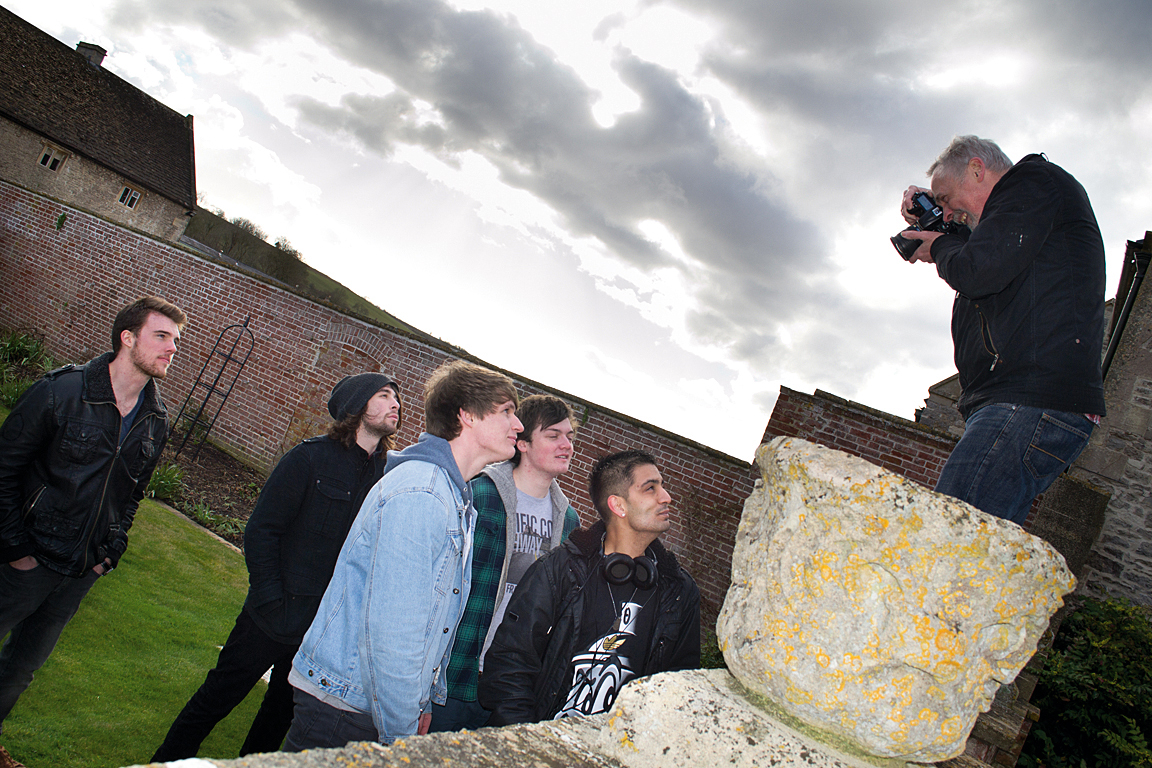Take a great group photograph: tips for posing perfect people shots
Getting everyone together and posing for a photo can be a pain. Here's the secret to taking perfect group shots
Watch the video: Take a great group photograph
Anyone who’s tried group shots will know that they can be a lot harder to pull off than individual portraits. First you have to get everyone together at the same time and wearing the right expressions, and then you have to figure out how to compose your shot so that it doesn’t just look like a boring and predictable line-up.
There is a place for those, of course; special family occasions are one example, where the main reason for taking the picture is to capture a record of the event. Prize givings, awards and company group shots are other examples.
However, there are times when you want a more casual approach that captures the personalities of your subjects and their spontaneous reactions – or you may be asked to come up with something more creative, such as an album cover for a band. This is when you need to explore some less formal photo opportunities, and get more adventurous with your shooting angles, lens choice and camera settings.
• Get more photoshoot ideas

There are other secrets to great group shots, such as making the most of your surroundings. Your choice of lens and viewpoint will obviously affect what’s in the background, but you can go further, such as using doorways to frame your subjects or making seats, steps and railings part of the composition.
The most important thing of all is to work on the interaction between yourself and your subjects, and use the group dynamics, working with obvious pairings and groups within the larger collective. Professional models know how to pose, but most of your subjects will feel quite awkward, so explain what you’re trying to do as you go along.
The best camera deals, reviews, product advice, and unmissable photography news, direct to your inbox!
Best of all, find some activity for them to engage in, no matter how silly, to break the ice and get some great expressions…

01 Tripod and remote

For formal line-ups, you’re better off putting your camera on a tripod and using a remote release. This isn’t just to cut the risk of camera shake, it keeps the composition constant as you take a series of shots and leaves your hands free to direct your subjects and move props around.
02 Camera settings

We’re setting the camera to aperture priority mode, then setting the lens aperture to f/11. We’re shooting from a long way back with our 18-200mm lens so that we can control what’s in the background, and produce a better perspective for portraits.
03 The classic line-up

When you’ve got people standing in a line, put the tallest in the centre and the shortest on the outsides. It does make a difference, even when your subjects are a similar height. Spend a few moments to get everyone in the right order with the right spacing, so that the line is smooth.
04 Handheld settings

For less formal shots you’ll want to use the camera handheld, so change the settings to avoid camera shake. Use your Auto ISO feature to set the maximum ISO you’re prepared to go to, and the minimum shutter speed you want to use – 1/125 sec should be okay here.
05 Change your viewpoint

You don’t have to shoot everything from head height. We found a wall to stand on, which gave us an unusual viewpoint for this shot, and we switched to a 10-24mm super wide-angle lens to produce an exaggerated perspective effect and a more striking composition.
06 Wide-angle perspectives

With wide-angle shots you need to be careful with the background, simply because so much more of it will appear in the frame. It took a few moments to frame this shot to exclude a muddled background and to make sure that the "Keep off grass" sign was just visible behind the band.
07 Go with flash

A burst of flash can make a big difference, especially in dull conditions. It brightens your subjects and helps them stand out against the background. The camera’s built-in flash may be all you need, but an external flash will give you more power and control over the direction.
08 Act the fool!

Lastly, it’s not enough to tell your subjects to look a the camera and say "Cheese!" Most people will act the fool with a little encouragement and direction from you. The classic ‘jumping in the air at the same time’ trick works brilliantly with natural performers like these.

More videos:
Photography tips and techniques videos
Couple photography: poses for portraits of pairs of people
Point of view photography: tips to get great POV photos

Rod is an independent photography journalist and editor, and a long-standing Digital Camera World contributor, having previously worked as DCW's Group Reviews editor. Before that he has been technique editor on N-Photo, Head of Testing for the photography division and Camera Channel editor on TechRadar, as well as contributing to many other publications. He has been writing about photography technique, photo editing and digital cameras since they first appeared, and before that began his career writing about film photography. He has used and reviewed practically every interchangeable lens camera launched in the past 20 years, from entry-level DSLRs to medium format cameras, together with lenses, tripods, gimbals, light meters, camera bags and more. Rod has his own camera gear blog at fotovolo.com but also writes about photo-editing applications and techniques at lifeafterphotoshop.com
